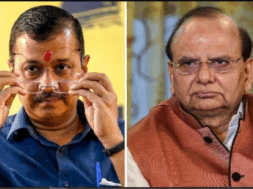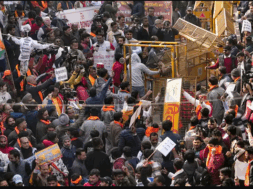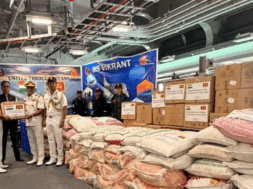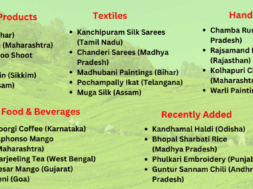
The UK: Month-old Starmer govt faces counter-riots; “civil war inevitable,” says Elon Musk
Virendra Pandit
New Delhi: For centuries, the erstwhile British Empire controlled the continents and the oceans through its divide-and-rule policy. Now it is getting the taste of its own medicines: pro and anti-immigrant demonstrations—mainly for and against the Muslims—have put the newly-installed Labour Government in a quandary within weeks of its installation.
As his country descends into spiraling chaos, Prime Minister Keir Starmer, a former chief prosecutor, is facing his first crisis since winning a July 4 election. He has warned rioters of lengthy jail terms as he seeks to stamp out the worst outbreak of violence in the United Kingdom in 13 years. Around two dozen towns and cities across the UK were under siege.
Even Elon Musk has said a civil war in Britain is “inevitable.”
Britain has been hit by a series of riots that erupted early last week after three young girls were killed in a knife attack in Southport, northwest England, triggering a wave of false messaging online that wrongly identified the suspected killer as an Islamist migrant, the media reported on Thursday.
Thousands of police and anti-racism protesters gathered on streets across Britain on Wednesday to challenge expected far-right groups that, however, failed to materialize after a week of violent racist attacks targeting Muslims and migrants.
Posts online had said far-right, anti-Muslim protesters would target a list of immigration centers, migrant support centers, and specialist law firms on Wednesday, prompting many businesses to close early and some shops to board up windows.
The reports prompted the deployment of thousands of police officers, and crowds of protesters massed in towns and cities including London, Bristol, Birmingham, Liverpool, and Hastings, holding banners saying “Fight Racism,” “Stop the Far Right” and “Will trade racists for refugees.”
The Left-liberal protesters were made up of a motley mob of Muslims, anti-racist and anti-fascist groups, trade unionists, left-wing organizations, and locals appalled at the ongoing rightist-led riots that had hit the country they once boasted was the most peaceful in the world.
Until Wednesday evening, there were no reports of any serious disorder that day. Police said around 50 people in Croydon, south London, had thrown bottles and were trying to cause disruption.
Riots erupted last week when groups of a few hundred mostly men clashed with police and smashed windows of hotels housing asylum-seekers from Africa, Asia, and the Middle East, chanting “get them out” and “stop the boats” – a reference to those arriving in Britain in small dinghies without permission.
They also stoned mosques, prompting Muslim organizations to issue community safety advice.
A hundred demonstrators were arrested and a 58-year-old man was jailed for three years for violent disorder on Wednesday, while two others, aged 41 and 29, were sentenced to 20 and 30 months, respectively.
“This is the swift action we’re taking. If you provoke violent disorder on our streets or online, you will face the full force of the law,” PM Starmer said.
Migration to Britain was a major factor in its 2016 vote to leave the European Union. In July, it became a battleground during the election, with Nigel Farage’s Reform Party winning around 4 million votes on calls for tighter border controls.
Britain saw record net migration levels in 2022, with numbers buoyed by those arriving from Ukraine and Hong Kong, and through work and student visas.
Net migration through legal means was some 685,000 in 2023, while 29,000 people arrived on small boats across the Channel, many having fled war zones. The far-right chants of “stop the boats” were also a slogan of the Conservative Party before it was swept out of power after 14 years at the election.
The government has put together a “standing army” of 6,000 specialist police officers to respond to any violence.
The National Police Chiefs’ Council said more than 120 people had been charged and 428 arrests made in connection with the disorder.














